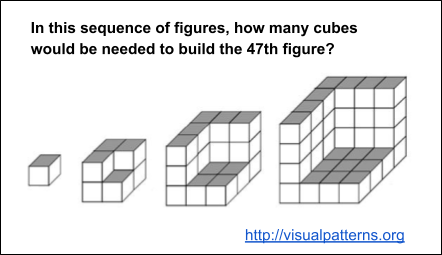Every three years the OECD administers and publishes the Programme for International Student Assessment, better known as PISA, which evaluates 15 year-old students around the world to determine how well their education system has prepared them for life after compulsory schooling. This test is important because it allows the performance of educational systems to be examined and compared on a common measure across countries. Currently 70 countries participated in the latest PISA.
In this report, they use their data to answer an important question: How much should I direct student learning in my mathematics classes?
For years, the most common teaching strategy has been teacher directed with a small – but vocal – contingent calling for a more student-oriented teaching. Which one is better? Unfortunately, it is not a simple “either/or” proposition. It would have been so nice if the data simply said “do THIS and not THAT”. Rather, it is a bit more nuanced.
In a nutshell, however, a key finding is that as the instruction becomes more teacher-directed the more student learning relies upon using memorization skills. Conversely, the more student-oriented the instruction, the less students rely upon memorization and are increasingly able to elaborate upon their thinking.
My math colleague Randy put it this way…
If you are still teaching “I do, we do, you do” you are successfully teaching mimicry in the math classroom, nothing more. We know better. We need to do better.#mtbos #elemmathchat
— Randy Swift (@RandySwift9) October 15, 2022
When to use direct instruction versus student-centered instruction?
The PISA data indicate that direct instruction is slightly more successful in teaching students to solve the easiest mathematics problems. Yet as the problems become more difficult, students with more exposure to direct instruction no longer have a better chance of success. Students exposed to greater amounts of student-oriented teaching are more likely to solve the difficult problems on PISA.
When the goal is for students to learn and practice a discrete skill, then “I Do, We Do, You Do” direct instruction is likely the most effective instructional strategy.
But what if the goal is for students to persevere through the intricacies of a PERFORMANCE TASK? What if the goal is for students to think creatively about a solution method?
Direct instruction is unlikely to teach these things. This is why we also need student-centered instruction. Or call it inquiry instruction. Or “You Do, We Do, I Do”. Or Explore First…Formalize Later.
Whatever this type of instruction is called, it necessarily creates space for productive struggle (shown to have an Effect Size of 0.75) followed by group discussion (ES = 0.82). There is plenty of evidence showing the value of allowing students to grapple with the new math concept PRIOR to instruction.
Start here…
Key findings:
- Allowing learners to struggle will actually help them learn better, according to research on “productive failure” conducted by Manu Kapur, a researcher at the Learning Sciences Lab at the National Institute of Education of Singapore.
- Two groups of students: the first were scaffolded carefully by the teacher and successfully solved the problems. The second group collaborated with one another without any prompts from the teacher. The second group was unsuccessful in solving the problem. “And when the two groups were tested on what they’d learned, the second group “significantly outperformed” the first.”
If you are interested in learning more about how to decide when to teach a student-centered, inquiry-focused lesson versus a direct instruction lesson please contact us!
Duane Habecker
dhabecker@mcoe.org

